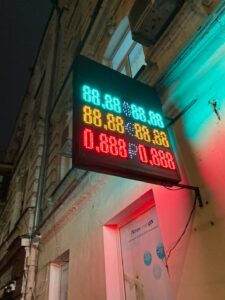The foreign exchange market, also known as the forex market, is the largest and most liquid financial market in the world. Trillions of dollars are traded on a daily basis, making it an attractive market for both professional traders and individuals looking to profit from currency fluctuations. In order to succeed in forex trading, traders need to analyze various factors that affect currency prices, and one of the most important tools at their disposal is volume indicators.
Volume indicators are used to measure the number of shares or contracts traded in a given period of time. In the forex market, volume is not readily available like it is in the stock market. However, there are several volume indicators that can be used to predict price breakouts and identify trend reversals.
One of the most commonly used volume indicators in forex trading is the on-balance volume (OBV). The OBV is a cumulative indicator that adds volume on up days and subtracts volume on down days. It is used to confirm price trends and identify potential reversals. When the OBV is rising, it indicates that buying pressure is increasing, and when it is falling, it indicates that selling pressure is increasing. Traders can use the OBV to confirm a breakout by looking for a divergence between the indicator and price. If the price is making new highs, but the OBV is not, it could be a sign that the breakout is not sustainable.
Another volume indicator that is commonly used in forex trading is the volume-weighted average price (VWAP). The VWAP is calculated by taking the sum of the volume-weighted prices and dividing it by the total volume. It is used to identify the average price at which a particular security has traded over a given period of time. Traders can use the VWAP to determine if the current price is above or below the average price, and make trading decisions accordingly. If the price breaks above the VWAP, it could be a sign of a bullish breakout, while if it breaks below the VWAP, it could be a sign of a bearish breakout.
The accumulation/distribution line (A/D line) is another volume indicator that can be used to predict price breakouts in the forex market. The A/D line is calculated by adding the volume on up days and subtracting the volume on down days. It is used to confirm the strength of a trend and identify potential reversals. Traders can use the A/D line to confirm a breakout by looking for a divergence between the indicator and price. If the price is making new highs, but the A/D line is not, it could be a sign that the breakout is not sustainable.
In addition to these volume indicators, there are several other tools that traders can use to predict price breakouts in the forex market. These include moving averages, trend lines, and support and resistance levels. By combining these tools with volume indicators, traders can increase their chances of successfully predicting price breakouts and making profitable trades.
In conclusion, volume indicators play a crucial role in predicting price breakouts in the forex market. They can help traders confirm trends, identify potential reversals, and make informed trading decisions. By using volume indicators in conjunction with other technical analysis tools, traders can increase their chances of success in the highly competitive forex market.






